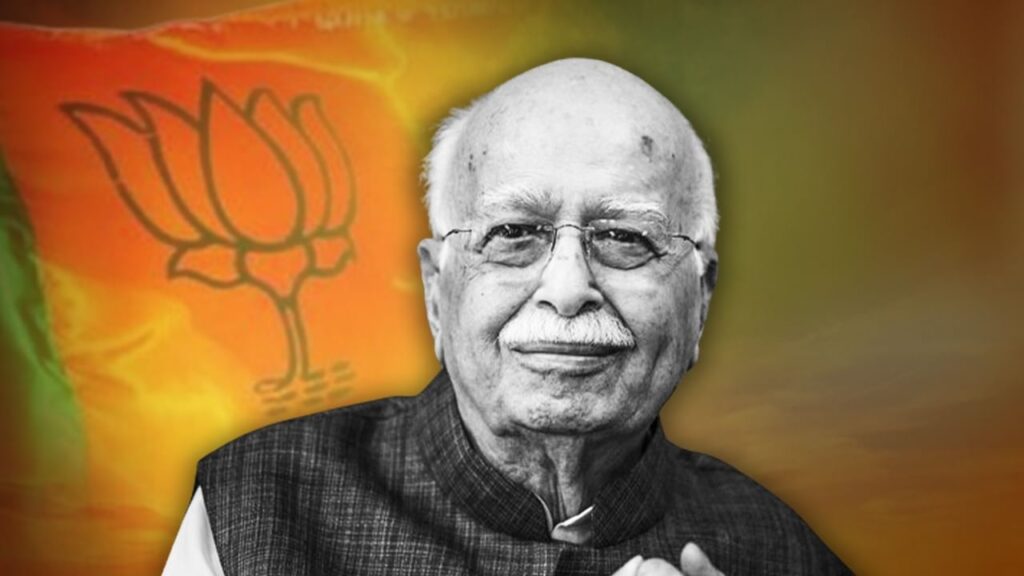The 1984 Lok Sabha elections marked a significant turning point in the political landscape of India and the Bharatiya Janata Party (BJP). With the party winning only two seats, it was compelled to re-evaluate its strategies and leadership. The immediate consequence of this defeat was the resignation of A.B. Vajpayee, the BJP’s first president. In February 1986, after a review of the electoral setback, L.K. Advani was entrusted with the leadership of BJP, signaling a fresh chapter for the party.
Having immigrated from Karachi after the partition, Advani holds the record for the longest-serving president of the BJP, with an impressive eleven-year tenure across three terms. During his leadership, he transformed the party’s fortunes and significantly increased its visibility, although it was not without internal turmoil.
In this segment of the BJP President Series, we delve into the narrative of L.K. Advani, the party’s second president, and his pivotal role in reshaping the BJP.
How Did Advani Ascend to the Presidency?
The aftermath of Indira Gandhi’s assassination in 1984 was a turbulent time for the opposition, with almost all parties besides the Congress, particularly the BJP, suffering heavy losses in the Lok Sabha elections—winning merely two seats. This debacle raised questions about the BJP’s future viability due to two key factors:
- Losses of Key Leaders: Prominent leaders, including A.B. Vajpayee, faced defeat in the elections.
- Allegations Against Leaders: Several senior leaders and party workers were accused in the anti-Sikh riots, which further tarnished the party’s image.
In the wake of this defeat, there was considerable unrest within party affiliates and associated organizations linked to the Rashtriya Swayamsevak Sangh (RSS). A.B. Vajpayee offered to resign, sensing the gravity of the situation but was initially persuaded to stay while a review committee was formed—comprising notable figures like K.L. Sharma, Murli Manohar Joshi, and Pramod Mahajan—to devise a revival strategy for the party.
Around this time, the Shah Bano case and the Ram Janmabhoomi movement gained momentum, compelling the BJP to act swiftly to maintain its connection with the Hindu electoral base. Shortly after the report release by the review committee, Vajpayee’s resignation was accepted, paving the way for Advani to assume the presidential role.
Why Advani Became the BJP President?
In March 1986, journalist Shekhar Gupta published an article in India Today titled ‘BJP Wants to Move Ahead Under Advani’s Leadership.’ The piece highlighted the crucial turning point for the BJP under Advani as it departed from its earlier image during Vajpayee’s tenure. Gupta noted the communication gap between the RSS and the BJP during A.B. Vajpayee’s leadership and emphasized the urgency for a leadership style that resonated with the party’s foundational ideologies.
Three Major Innovations by Advani to Revitalize the BJP
Upon becoming president, Advani instituted three strategic innovations aimed at rejuvenating the BJP:
- Alliance Formulation: Advani forged strategic alliances with like-minded parties, exemplified by the BJP’s collaboration with Shiv Sena in Maharashtra, which yielded significant electoral gains.
- Hardline Hindutva Approach: Shifting from Vajpayee’s moderate stance, Advani emphasized a firm Hindu identity, which resonated with the electorate and enabled BJP to emerge as a significant power broker post-1989 elections.
- Janata Yatra Initiatives: Motivated by the party’s growing clout, Advani organized a rath yatra from Somnath to Ayodhya to galvanize Hindu sentiments, although this was met with political turmoil and legal challenges.
BJP’s Transformation into a Three-Digit Winning Party
Advani’s strategic shifts paid off handsomely, as the BJP emerged as a formidable three-digit party in the 1991 elections, securing 120 Lok Sabha seats, marking its best electoral performance to date. This made Advani a key figure in Indian politics, albeit with waves of discontent amid internal conflicts.
The Pain of Not Becoming Prime Minister
In 1996, during discussions with journalist Prabhash Joshi, Advani expressed his mixed feelings about his contributions to the party juxtaposed against personal sacrifices. He acknowledged that while his leadership benefitted the BJP, it left him sidelined from the Prime Ministerial position, which ultimately went to A.B. Vajpayee.
The Most Powerful President
Over his eleven-year tenure, Advani cemented himself as the most influential president in BJP’s history, leading the party through pivotal phases in Indian politics. Renowned journalist Indrajit Badhwar termed him a ‘powerful BJP president’ for his strategic acumen in realigning the party’s objectives and rendering it a critical player on the national stage.
Internal Divisions During Advani’s Presidency
Advani’s years were not devoid of internal disputes, as seen in instances of factional splits. The first fissure occurred in 1995 when discontent from Shankar Singh Vaghela led to a splinter group, culminating in a series of electoral challenges for the BJP. Similar events unfolded in Madhya Pradesh in 2005, when Uma Bharti rebelled against the party leadership.
Stepping Down Amidst Controversy
After another electoral defeat in 2004, Advani returned as president but faced backlash for labeling Pakistan’s founder, Muhammad Ali Jinnah, as a secular figure. Rifts within the party escalated, leading to pressure from the RSS to resign, which he did in 2005, relinquishing the presidency to Rajnath Singh.

